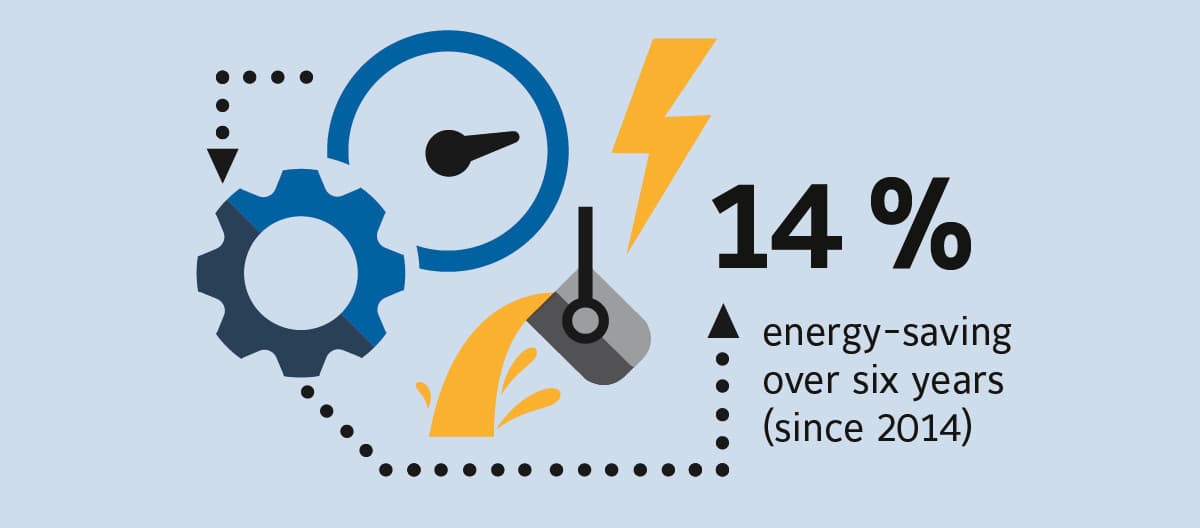Energy-saving in the hands of the individual
Part 1 of our series “Saving energy at Kuhn Special Steel”. Continue reading
Energy-saving helps the environment and reduces operating costs. Kuhn Special Steel has therefore put together an energy-management team to spot potential savings. The members of this team have identified two major areas: one involving people; the other has to do with technology.
We intend to use this three-part series on the subject of energy-saving to show how the team’s work has delivered savings in each category, and how we did it.
Employees: the people in charge of energy-saving
Our role as a metal-processing company makes us energy-intensive. There is no way of getting around this. It is therefore all the more important that we exploit all ways of saving energy. As part of our efforts to reduce consumption, the energy-management team carefully examined all the factors concerned, in both management and production. They looked at each of the processes involved. Their most-impressive finding is that employees can apply “smart” measures to become the people in charge of energy savings. They are in fact the key factor when it comes to energy consumption. This allows them both to help the environment and to increase our international competitiveness.
Workflow instead of downtime
The biggest energy consumer in the manufacture of centrifugal castings is the melting of raw materials. The manufacture of stainless steel involves alloys with melting points of around 1,500°C. This means that the furnace processing temperatures of stainless-steel melt lie between 1,800 and 2,200°C; temperatures that cannot be reduced. So how can an individual employee reduce energy consumption? The answer lies in improved workflow and optimised quality management.
The first item to tackle is coordination of the processing times between melting and casting, in order to minimise the corresponding waiting periods. This entails not melting the metal until the mould (the reusable centrifugal-casting canister) is prepared and immediately ready to be filled with molten stainless steel, as every minute for which the stainless steel remains liquid costs energy. The key to this is therefore good coordination between foundry casters and smelting staff.
A second factor involves the avoidance of faulty batches and defects in the cast components, thereby reducing the number of melting operations.
We have trained and raised the awareness of 70 production workers in order to ensure the successful implementation of both approaches. Each employee attends an eight-hour training session. Defects, which are responsible for high energy consumption, have been addressed and evaluated. We have also run daily “good morning” meetings to bring smelting staff and foundry casters together. The success of these measures has been overwhelming.
The savings: over 530 metric tons of CO2
“Our energy savings are calculated on the basis of energy used in relation to quantities produced. This gives us a reliable comparative reading. Our goal, using our reference years (2009 to 2013) as a comparison, is to deliver average energy savings of 1.35% per kilo of stainless steel produced. We have now saved a total of more than 14% of energy over six years”, says an enthusiastic Dirk Breuer, a member of Kuhn Special Steel’s energy-management team. Expressed in round numbers, this is the equivalent of more than a million kilowatt-hours of electricity. It also equates to savings of more than 530 metric tons of carbon dioxide. This is more CO2 than our entire workforce consumes privately in one year. If we were to put this amount of carbon dioxide into medium-sized bin bags, we would need more than three million of them.
This means benefits in terms of both the environment and energy costs, but there is also a third positive effect: “We have realised that employees actually find energy-saving to be fun. The resulting optimised workflow improves their mood. It works. There is no waiting around for, or getting angry with, other people”, Dirk Breuer continues. Employees are also proud of being able to make an important contribution to protection of the environment and the success of the company.
Illustrations: lessingtiede


